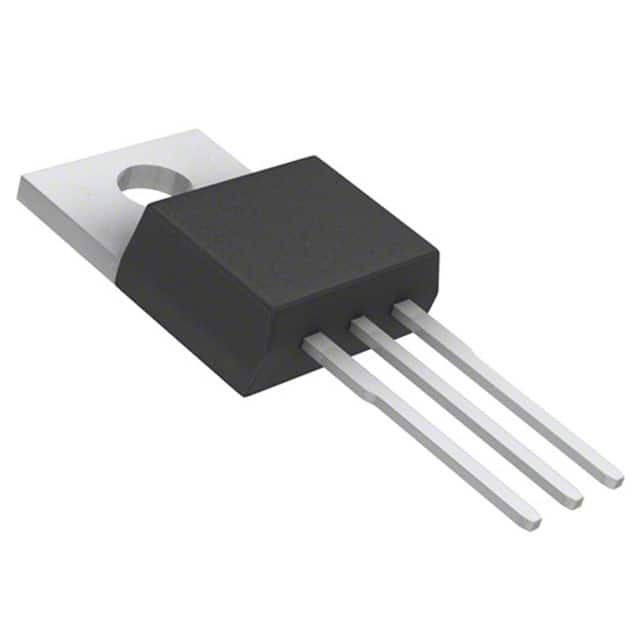Viz Specifikace pro podrobnosti o produktu.

FQP7N20
Introduction
The FQP7N20 is a power MOSFET belonging to the category of electronic components used in various applications. This entry provides an overview of the basic information, specifications, pin configuration, functional features, advantages and disadvantages, working principles, detailed application field plans, and alternative models of the FQP7N20.
Basic Information Overview
- Category: Power MOSFET
- Use: The FQP7N20 is commonly used as a switching device in power supplies, motor control, and other high voltage applications.
- Characteristics: It exhibits low on-state resistance, high switching speed, and low gate charge, making it suitable for high-efficiency power conversion.
- Package: TO-220
- Essence: The FQP7N20 is designed to handle high voltage and current levels efficiently.
- Packaging/Quantity: Typically available in reels or tubes containing multiple units.
Specifications
- Voltage Rating: 200V
- Current Rating: 7A
- On-State Resistance: 0.8Ω
- Gate Charge: 22nC
- Operating Temperature Range: -55°C to 175°C
Detailed Pin Configuration
The FQP7N20 follows the standard pin configuration for a TO-220 package: 1. Gate (G) 2. Drain (D) 3. Source (S)
Functional Features
- High Voltage Capability: The FQP7N20 can withstand high voltage levels, making it suitable for use in high-power applications.
- Low On-State Resistance: This feature minimizes power losses and enhances efficiency in power conversion circuits.
- Fast Switching Speed: The MOSFET offers rapid switching characteristics, enabling efficient control of power flow.
Advantages and Disadvantages
Advantages
- High voltage capability
- Low on-state resistance
- Fast switching speed
- Suitable for high-power applications
Disadvantages
- Sensitive to static electricity
- Requires careful handling during assembly and installation
Working Principles
The FQP7N20 operates based on the principle of field-effect transistors. When a sufficient voltage is applied to the gate terminal, it creates an electric field that controls the conductivity between the drain and source terminals, allowing the device to act as a switch in electronic circuits.
Detailed Application Field Plans
The FQP7N20 finds extensive use in the following applications: - Switching power supplies - Motor control systems - Inverters and converters for renewable energy systems - High voltage DC-DC converters
Detailed and Complete Alternative Models
Some alternative models to the FQP7N20 include: - IRF540N - STP7NB80 - FQPF7N80 - IRLB8748
In conclusion, the FQP7N20 power MOSFET offers high voltage capability, low on-state resistance, and fast switching speed, making it suitable for various high-power applications such as power supplies, motor control, and renewable energy systems.
[Word count: 411]
Seznam 10 běžných otázek a odpovědí souvisejících s aplikací FQP7N20 v technických řešeních
What is FQP7N20?
- FQP7N20 is a power MOSFET transistor designed for high-speed switching applications.
What are the key features of FQP7N20?
- The key features of FQP7N20 include a low on-resistance, high current capability, and fast switching speed.
What are the typical applications of FQP7N20?
- FQP7N20 is commonly used in power supplies, motor control, lighting systems, and other high-frequency switching applications.
What is the maximum voltage and current rating for FQP7N20?
- FQP7N20 has a maximum voltage rating of 200V and a continuous drain current rating of 7A.
What is the thermal resistance of FQP7N20?
- The thermal resistance of FQP7N20 is typically around 62°C/W.
Is FQP7N20 suitable for use in automotive applications?
- Yes, FQP7N20 is suitable for use in automotive applications due to its high current capability and rugged construction.
Does FQP7N20 require a heat sink for operation?
- It is recommended to use a heat sink with FQP7N20, especially when operating at high currents or in high-temperature environments.
Can FQP7N20 be used in parallel to increase current handling capacity?
- Yes, FQP7N20 can be used in parallel to increase the overall current handling capacity in a circuit.
What are the common failure modes of FQP7N20?
- Common failure modes of FQP7N20 include overcurrent stress, overvoltage stress, and thermal overstress.
Where can I find the detailed datasheet for FQP7N20?
- The detailed datasheet for FQP7N20 can be found on the manufacturer's website or through authorized distributors.

